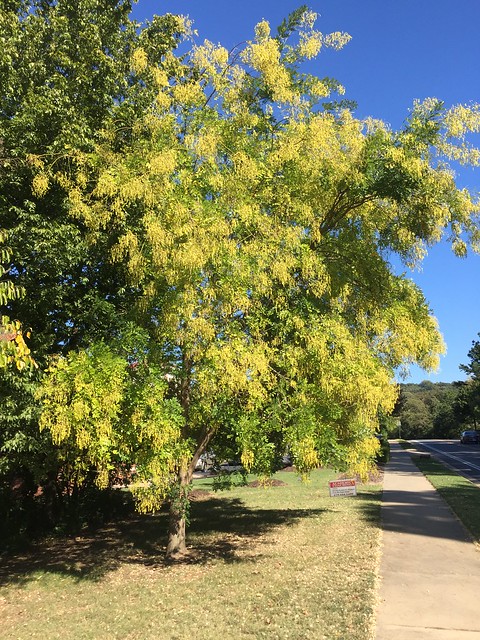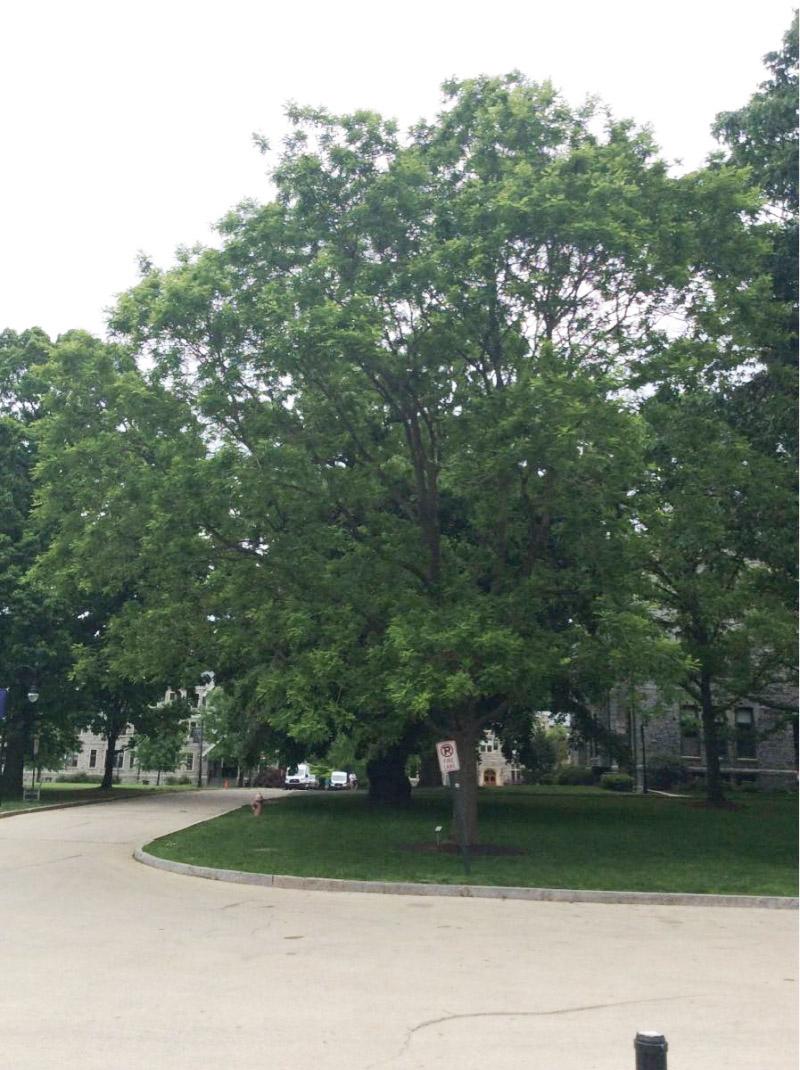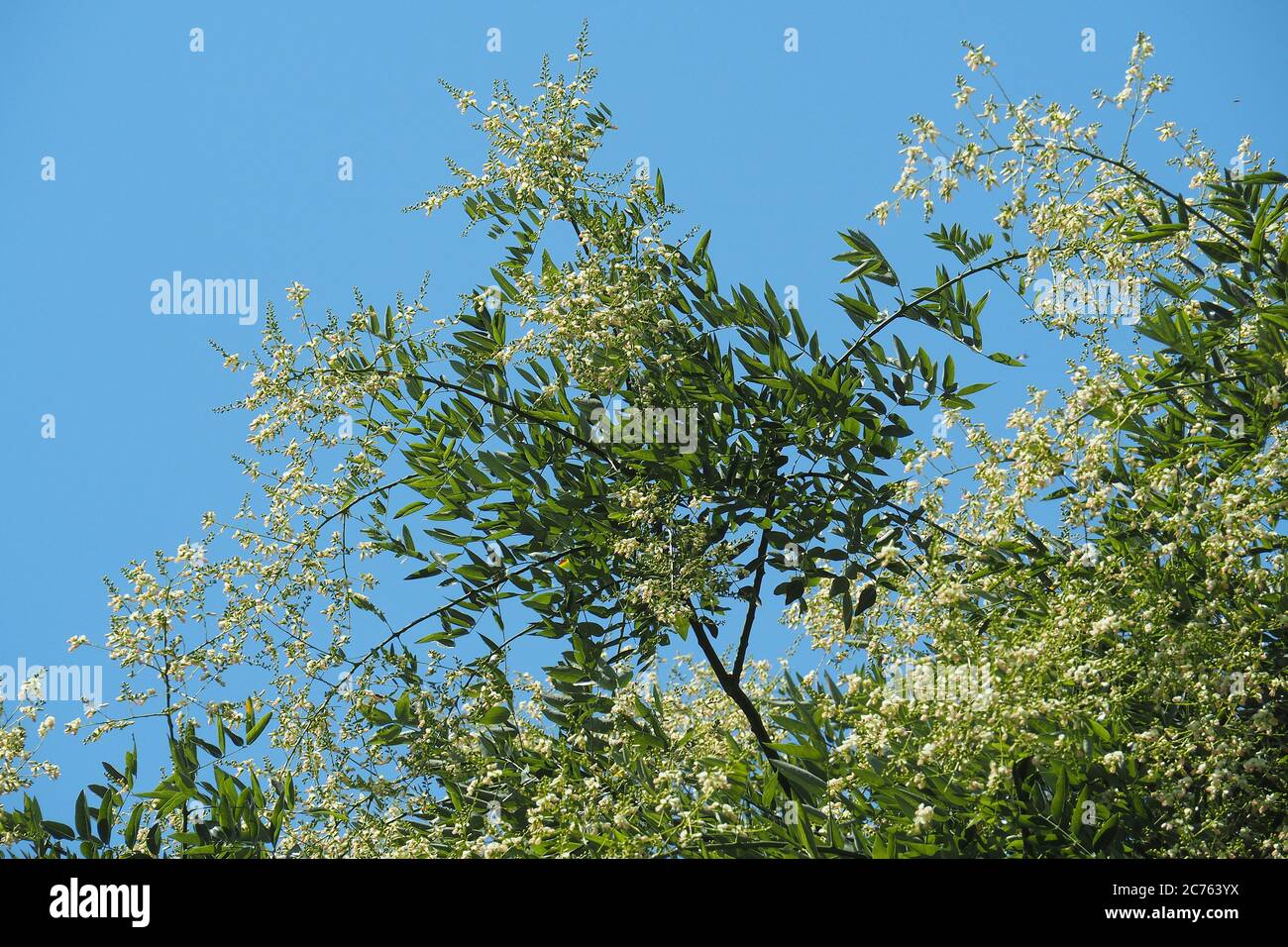japanese pagoda tree invasive
Styphnolobium japonicum commonly called Japanese pagoda tree or Chinese scholar tree is native to China and Korea but not Japan. It is hardy to -25F 317C.

Japanese Pagoda Tree Chinese Scholar Tree
Medium to fast grower Compound medium green leaf creamy white bell shaped flower mid-summer bright green fruit pod.

. Mid-Atlantic Exotic Plant Management Team Invasive Plant List. Optimum conditions for growth. National Park Service National Capital Region Exotic Plant Management Team Invasive Plant List.
Sophora japonica Where to Look. This map identifies those states that list this species on their invasive species list or law. Mile-a-minute vine stink bugs etc.
Japanese Pagoda Japanese pagoda is a large deciduous tree native to China It is an upright forming a lacy canopy of dark green pinnate leaves. However with proper care it can be formed to grow into a tall specimen with an erect trunk. A clusters of creamy white-green fragrant flowers appear in summer.
By landscapers and the nursery trade purple loosestrife wisteria flowering pear Japanese bar- berry. Despite its name the Japanese pagoda tree is native to China and was introduced to Japan where it is commonly found on the grounds of Buddhist temples. It is a medium to large deciduous tree that typically matures to 50-75 less frequently to 100 tall with a broad rounded crown.
The pagoda tree has been identified as an emerging invasive threat in the mid-Atlantic region. The pagoda flower isnt considered invasive or toxic. In summer clusters of sweet-pea shaped blossoms are produced followed by seedpods.
However it can grow quickly and may crowd out other plants. Leaves are dark green and divided into several leaflets. The Japanese pagoda tree is a good urban street park or lawn tree.
Robert Vidéki Doronicum Kft. Some listed trees are considered to be invasive species and should only be planted in locations where they are not likely to spread into native woodlands. It is resistant to pests drought and pollution.
Invasive plants can be introduced by human activity in a number of ways. New Invaders of the Southeast. When grown in the open it tends to branch low to the ground.
Fruits make very slippery ground when they fall. Good tree for city conditions plant Princeton Upright or Regent varieties. Is Pagoda flower invasive.
Japanese pagoda tree Styphnolobium japonicum is a Terrestrial species. The Pagoda tree is capable of growing in all soil types although it grows best in well drained loamy soils and in full sun conditions. 2 A recommended goal is to plant.
Japanese pagoda tree Styphnolobium japonicum Snowbell Styrax japonicus Styrax obassia Tree lilac Syringa reticulata Baldcypress Taxodium distichum Yew. Accidentally by transportation into a region eg. This is a picturesque small tree with a graceful weeping shape stiff drooping branches which remain bare until late May.
Can be somewhat difficult to train into a central leader. Styphnolobium japonicum L Schott previously. And by well meaning intentional introduc-.
The Japanese pagoda tree is a deciduous tree. Robert Vidéki Doronicum Kft. Japanese pagoda tree Styphnolobium japonicum L Schott.
Atlantic and Gulf Coastal Plain AGCP. Japanese pagoda tree Styphnolobium japonicum also called Chinese scholar tree tree of the pea family Fabaceae. Seed pods appear in the summertime which can cause serious litter on the ground.
Additionally ingesting parts of any plant may cause mild stomach discomfort. Grows best in moist fertile well-drained soil. It is generally cultivated for its attractive compound foliage and fragrant.
Mid-Atlantic Coastal Plain regions. Japanese pagoda treeSophora japonica Family Fabaceae Pea family Plant Identification.

Japanese Pagoda Tree Styphnolobium Japonicum Fabales Fabaceae 5396099

Japanese Pagoda Tree Styphnolobium Japonicum Fabales Fabaceae 5539402

Japanese Pagoda Tree Japanischer Schnurbaum Styphnolobium Japonicum Sophora Japonica Kozonseges Pagodafa Japanakac Stock Photo Alamy
A Japanese Pagoda Tree Sophora Japonica L Planted In A Roadside Download Scientific Diagram
Japanese Pagoda Tree Becoming Popular In U S Cities What Grows There Hugh Conlon Horticulturalist Professor Lecturer And Gardener

Styphnolobium Japonicum Pagoda Tree Buy Seeds At Rarepalmseeds Com
Japanese Pagoda Tree Becoming Popular In U S Cities What Grows There Hugh Conlon Horticulturalist Professor Lecturer And Gardener

Japanese Pagoda Tree Styphnolobium Japonicum Bryn Mawr College

Japanese Pagoda Tree News From Rockcliff Farm

Japanese Pagoda Tree Styphnolobium Japonicum Fabales Fabaceae 5539401

Japanese Pagoda Tree News From Rockcliff Farm

Pin By Danica Newell On Plant Life Tree Seeds Japanese Pagoda Tree

Japanese Pagoda Tree Japanischer Schnurbaum Styphnolobium Japonicum Sophora Japonica Kozonseges Pagodafa Japanakac Stock Photo Alamy

Honingboom Sophora Japonica Pendula Groenblijvend Shade Trees Fast Growing Shade Trees Garden Trees

Closeup Of A Japanese Pagoda Tree In Full Summer Bloom With White Flowers As A Nature Background Stock Image Image Of Flowers Leaf 237477447

Weeping Japanese Pagoda Tree Stock Photo Image Of Botany Japanese 179370186

Styphnolobium Japonicum Landscape Plants Oregon State University
